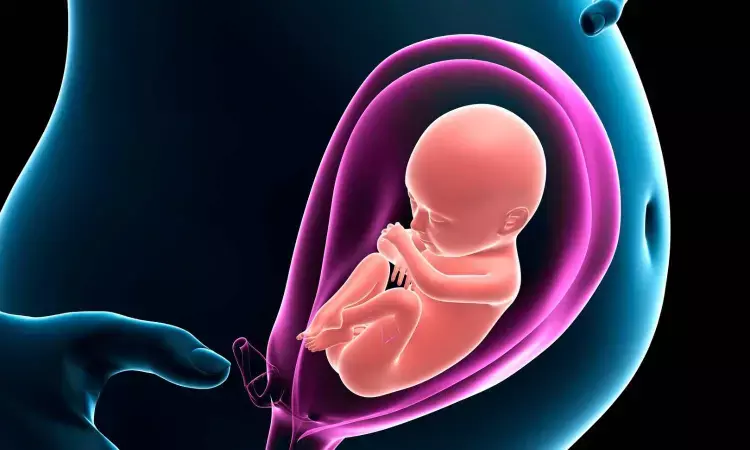- Home
- Medical news & Guidelines
- Anesthesiology
- Cardiology and CTVS
- Critical Care
- Dentistry
- Dermatology
- Diabetes and Endocrinology
- ENT
- Gastroenterology
- Medicine
- Nephrology
- Neurology
- Obstretics-Gynaecology
- Oncology
- Ophthalmology
- Orthopaedics
- Pediatrics-Neonatology
- Psychiatry
- Pulmonology
- Radiology
- Surgery
- Urology
- Laboratory Medicine
- Diet
- Nursing
- Paramedical
- Physiotherapy
- Health news
- Fact Check
- Bone Health Fact Check
- Brain Health Fact Check
- Cancer Related Fact Check
- Child Care Fact Check
- Dental and oral health fact check
- Diabetes and metabolic health fact check
- Diet and Nutrition Fact Check
- Eye and ENT Care Fact Check
- Fitness fact check
- Gut health fact check
- Heart health fact check
- Kidney health fact check
- Medical education fact check
- Men's health fact check
- Respiratory fact check
- Skin and hair care fact check
- Vaccine and Immunization fact check
- Women's health fact check
- AYUSH
- State News
- Andaman and Nicobar Islands
- Andhra Pradesh
- Arunachal Pradesh
- Assam
- Bihar
- Chandigarh
- Chattisgarh
- Dadra and Nagar Haveli
- Daman and Diu
- Delhi
- Goa
- Gujarat
- Haryana
- Himachal Pradesh
- Jammu & Kashmir
- Jharkhand
- Karnataka
- Kerala
- Ladakh
- Lakshadweep
- Madhya Pradesh
- Maharashtra
- Manipur
- Meghalaya
- Mizoram
- Nagaland
- Odisha
- Puducherry
- Punjab
- Rajasthan
- Sikkim
- Tamil Nadu
- Telangana
- Tripura
- Uttar Pradesh
- Uttrakhand
- West Bengal
- Medical Education
- Industry
Optimal Cervical Dilatation of 6 cm Linked to Decreased Cesarean Delivery Incidence

Traditionally, labour can be divided into 3 stages, and the first stage is further subclassified into latent and active phases. A cervical dilation of 4 cm marks the beginning of the active stage of labour. This is the rapid, accelerated phase of labour, in which nulliparas and multiparas are projected to have cervical dilatation rates of 1 cm/hour and 0.5 cm/ hour, respectively.
The caesarean section carries inherent risks of mortality and morbidity for both the mother and the neonates. Previous caesarean delivery is associated with a higher risk of uterine rupture, morbidly adherent placenta, placenta praevia, and severe maternal outcome. Likewise, there is an increased risk of early neonatal death, preterm birth, and neonatal intensive care unit (NICU) admission. The higher risk of NICU in neonates delivered by elective caesarean section. There is an urgent need to scrutinize and change our intrapartum management of low-risk women especially those without caesarean scars. The objective of this study was to compare the maternal and perinatal outcomes of women who were diagnosed to be in the active phase of labour at 4 cm versus 6 cm cervical os dilatation.
This is a cross-sectional study comparing pregnancy outcomes between participants with 4 and 6 cm of cervical os dilatation at the diagnosis of the active phase of labour. It was conducted in a single tertiary centre involving low-risk singleton pregnancies at or beyond 37 weeks with spontaneous onset of labour. A total of 155 participants were recruited, 101 in group 1 (4 cm) and 54 in group 2 (6 cm). Both groups were similar in mean maternal age, mean gestational age at delivery, ethnicity, median haemoglobin level at delivery, body mass index, and parity.
There were significantly more participants in group 1 who needed oxytocin augmentation (p < 0:001) for the longer mean duration (p = 0:015), use of analgesia (p < 0:001), and caesarean section rate (p = 0:002).
None of the women had a postpartum haemorrhage or a third- or fourth-degree perineal tear, and none of the neonates required admission to the neonatal intensive care unit. There were significantly more nulliparas who had a caesarean section as compared to multiparas. A cervical os dilatation of 6 cm reduces the risk of caesarean section by 11% and increases three times more the need for analgesia.
A larger clinical trial is needed to confirm the findings of this study. Authors have recently changed the labour management policy by changing the demarcation of the active phase of labour from 4 to 6 cm cervical dilatation for low-risk women. There will be an opportunity to look at the impact of this modification which will involve a larger sample size.
“Redefining the active phase of labour from 4 to 6 cm is feasible and is associated with a reduced caesarean section rate without significant adverse maternal and neonatal outcomes amongst low-risk women.”
Source: Nadzirah Mohd Fathil, Rahana Abd Rahman, Azmawati Mohd Nawi; Hindawi Journal of Pregnancy Volume 2023
https://doi.org/10.1155/2023/8243058
MBBS, MD Obstetrics and Gynecology
Dr Nirali Kapoor has completed her MBBS from GMC Jamnagar and MD Obstetrics and Gynecology from AIIMS Rishikesh. She underwent training in trauma/emergency medicine non academic residency in AIIMS Delhi for an year after her MBBS. Post her MD, she has joined in a Multispeciality hospital in Amritsar. She is actively involved in cases concerning fetal medicine, infertility and minimal invasive procedures as well as research activities involved around the fields of interest.
Dr Kamal Kant Kohli-MBBS, DTCD- a chest specialist with more than 30 years of practice and a flair for writing clinical articles, Dr Kamal Kant Kohli joined Medical Dialogues as a Chief Editor of Medical News. Besides writing articles, as an editor, he proofreads and verifies all the medical content published on Medical Dialogues including those coming from journals, studies,medical conferences,guidelines etc. Email: drkohli@medicaldialogues.in. Contact no. 011-43720751


